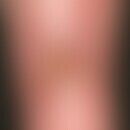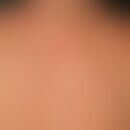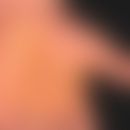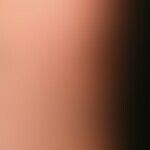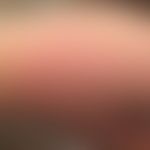Synonym(s)
HistoryThis section has been translated automatically.
Bateman 1817; Hutchinson 1878; Rasch 1900
DefinitionThis section has been translated automatically.
The most frequent light dermatosis induced by UV radiation, appearing after a latency period of hours or a few days, with various clinical manifestations (urticas, papules, vesicles, plaques, cocard-like lesions, etc.), always accompanied by marked itching (or burning), exclusively in sun-exposed areas. The disease affects all ethnic groups. Persons with lighter skin type are more frequently affected.
You might also be interested in
ClassificationThis section has been translated automatically.
Clinically, 3 main types and other subtypes are distinguished:
- Papular type:
- Hemorrhagic type.
- Plaque type:
- Erythema-exsudativum-multiforme type.
- Papulo-vesiculous type:
- Ictus type
- Vesiculo-bullous type
- (Lichenoid type - described in the colored population).
Occurrence/EpidemiologyThis section has been translated automatically.
Prevalence data vary between 10-20% of the Central European population, depending on the source (similar prevalence figures are given for the USA and Scandinavia).
EtiopathogenesisThis section has been translated automatically.
Currently unknown. Probably, the disease is based on a genetically predisposed hypersensitivity reaction of the delayed type, which is initiated by one or more (so far unknown) photo-induced antigens. In addition, a disturbance of UV-induced immunosuppression also appears to result in light-induced antigens leading to a specific cellular immune response. There is an increased sensitivity mainly to UVA, but some patients also react to UVB rays and to visible light.
ManifestationThis section has been translated automatically.
In 60% of the Pat. first manifestation between the ages of 10 and 30. In at least 20% of cases there is a positive family history.
Women are affected about 10 times more frequently than men (Note: in California a gender distribution of 1:1 is reported!)
Seasonal accumulation: In spring to early summer (March to June), in light-weathered persons also occurring later.
Mostly patients with lighter skin type are affected.
LocalizationThis section has been translated automatically.
Uncovered areas of skin, especially lateral parts of the face, neckline, lateral upper arm, extensor sides of the forearms, back of the hands. Rare are scattering reactions. An essential characteristic of the disease is the preference for certain, individually different but recurring predilection sites.
Clinical featuresThis section has been translated automatically.
Very different from patient to patient (hence the name "polymorphic light dermatosis"), also in the individual patient various skin manifestations with mostly pronounced itching.
Occurrence of clinical symptoms a few hours to days after (single and first-time) intensive sun exposure. Occurrence is also possible after less intensive sun exposure on several consecutive days (probably exceeding a critical cumulative total dose).
Decay (without further UV provocation) within a few days without leaving residuals. Clinically, the predilection sites usually contain small spots, more rarely large red erythema, disseminated papules or plaques, but also papulo vesicles and erythema exudativum multiforme-like lesions. In the further course of the sunny period, a habituation effect (hardening) occurs in most cases despite further exposure.
HistologyThis section has been translated automatically.
Sparsely to dense cuff-shaped, superficial (in a later stage also deep), perivascular lymphohistiocytic cell infiltrate. Subepidermal edema, possibly spongiosis and vacuole degeneration of the basal epithelia. Mostly normal stratum corneum. In case of more severe epidermal changes also parakeratosis.
Different histopathological patterns may occur in the different clinical variants, although the basic pattern is preserved.
DiagnosisThis section has been translated automatically.
Photoprovocation test in a non-appearance interval in skin not exposed to UV; MED is usually normal. Triggering of isomorphic skin phenomena on larger test fields (5 x 8 cm) by multiple UVA exposure (at least 3 times; 50-100 J/cm2) in 50-70% of cases In general, irradiation is carried out on 3-5 consecutive days in non-irradiated skin areas. Readings are taken up to 72 hours after the last irradiation at 24-hour intervals. A late reading after 2-3 weeks can be performed to exclude lupus erythematosus. In most studies it has been shown that testing with UVA or solar simulated radiation is more effective than UVB photoprovocation.
Depending on the degree of severity, a distinction is made between photoprovocation:
- Grade 0: pigmentation, redness, no papulovesicles.
- Grade I: erythema and pruritus.
- Grade II: > 20 papulovesicles in the provocation field, or formation of a plaque > 50% of the provocation field.
- Grade III: Like grade II or blisters and hemorrhages in the provocation field.
Differential diagnosisThis section has been translated automatically.
Light dermatosis of papular or papulovesicular type.
- Photoallergic dermatitis: Characteristic and thus diagnostically groundbreaking heliotropic macro-pattern, whereas the micro-pattern shows the picture of an eczematous dermatitis of varying acuity and severity (erythema, papules, papulo-vesicles, areal scaling and pruritus). In contrast to phototoxic dermatitis, the "contact pattern" is not sharp but, as in contact allergic dermatitis, is blurred with "eczematous scattered foci" beyond the UV exposure.
- Ictus: association with UV exposure anamnestically not given. Rarely localized to UV-exposed areas.
- REM syndrome: Chronic persistent clinical picture with reticular to areal, sharply demarcated, irregularly configured, bright red papules. Itching only mild.
- Lupus erythematosus tumidus: Marked photosensitivity. Confluence may result in the formation of anular or gyrated marginal plaques. No scarring healing. The chronic course with persistence of the efflorescences for months is characteristic and therefore diagnostic.
- Airborne Contact Dermatitis: Evidence of the type of sensitization; there is less of a clinical connection with the sun than with certain pollens. Pollen. Clinically and histologically clear "eczema".
Plaque-type light dermatosis
- Drug exanthema, maculo-papular: connection withdrug intake must be established. Sunburn-like pictures are usually encountered with the ingestion of photosensitizing substances(phototoxic dermatitis).
- Light urticaria: Very rare light dermatosis characterized by erythema and wheal formation at the exposed skin sites within minutes after light exposure (this is not the case with polymorphous light dermatosis). Subjectively, patients suffer from extremely severe itching. Typical is a two-dimensional erythema formation.
- Erythema exsudativum multiforme: From the clinical morphology, analogous pictures may appear in the erythema exsudativum multiforme-like type. The pattern of spread with strict emphasis on sun-exposed areas argues against the diagnosis of "erythema exsudativum multiforme". The histological pattern may cause difficulties in differentiation!
Histologic differential diagnosis:
- Lupus erythematosus tumidus: Dense superficial and deep perivascular lymphocyte infiltrates. No edema in the papíllar body
- Erythema exsudativum multiforme: Interface dermatitis with numerous necrotic keratinocytes.
General therapyThis section has been translated automatically.
External therapyThis section has been translated automatically.
In the acute stage glucocorticoids such as 0.1% betamethasone lotio(e.g. Betagalen Lotio, R030 ) or 0.1% triamcinolone acetonide cream.
Internal therapyThis section has been translated automatically.
Antihistamines such as desloratadine (e.g. Aerius) 5 mg/day to stop itching In severe cases, systemic glucocorticoids such as prednisolone (e.g. Decortin H) in high doses, e.g. 100 mg/day p.o. Balance out quickly.
Progression/forecastThis section has been translated automatically.
Overall chronic recurrent course from season to season. Effective sun protection and photo(chemo)therapy ("light-hardening") can have a very positive influence on the disease.
ProphylaxisThis section has been translated automatically.
Externally applied antioxidants (flavonoids such as alpha-glycosylrutin, tocopherol acetate) 1 week before exposure to the sun, starting twice a day and before current tanning, rub in thinly.
Inform the patient about the action spectrum and the character of the disease.
Consistent sun protection with textiles (only for light forms is sun protection alone with covering measures such as clothing, hats, make-up sufficient) and physical sunscreens (e.g. Anthelios; Eucerin Phase 1 Pre-Sun Gel combined with Eucerin Phase 2 Protection Gel 15). Always use light protection products with UVA and UVB filters.
If necessary, get used to light slowly by light-hardening in spring. The majority of patients remain completely symptom-free during the summer season after a pre-seasonal treatment cycle. Conventional UVB-hardening is inferior to PUVA-therapy hardening. Narrowband UVB-hardening (311 nm) is said to have an effect similar to photochemotherapy.
NaturopathyThis section has been translated automatically.
Note(s)This section has been translated automatically.
Remember! Chronic forms with an eczematous picture do not belong to the spectrum of polymorphic light dermatosis, but point to the group of forms of chronic actinic dermatitis (see below Dermatitis, chronic actinic).
LiteratureThis section has been translated automatically.
- Bateman T (1817) Delineations of cutaneous diseases: exhibiting the characteristic appearances of the principal genera and species comprised in the classification of the late Dr. Willan; and completing the series of engravings begun by that author. Longman, Hurst, Rees, Orme and Brown (eds.), Paternoster-Row, London
- Boonstra HE et al (2000) Polymorphous light eruption: A clinical, photobiologic, and follow-up study of 110 patients. J Am Acad Dermatol 42(2 Pt 1): 199-207
- Fesq H et al (2003) Management of polymorphous light eruption: clinical course, pathogenesis, diagnosis and intervention. At J Clin Dermatol 4: 399-406
- Hutchinson J (1878) Summer Prurigo, prurigo aestivalis, seu prurigo adolescentium, seu acne-prurigo. Medical Times and Gazette (London) 1: 161
- Lindmaier A et al (1991) The PLD patient. Skin type, hardening and other light-associated features. Dermatologist 42: 430-433
- Lindmaier A et al (1992) The polymorphic light dermatosis. Dermatologist 43: 621-624
- Lim HW, Hönigsmann H, Hawk JLM (eds.) (2007) Photodermatology. Informa Healthcare USA, Inc. New York
- Mang R, Krutmann J (2003) Sun protection during holidays. dermatologist 54: 498-505
- Neumann NJ et al (2004) Polymorphic light dermatosis. JDDG 2: 220-226
- Stratigos AJ et al (2002) Polymorphous light eruption. J Eur Acad Dermatol Venereol 16: 193-206
- Tanew A et al (1996) The polymorphic light dermatosis. Act Dermatol 22: 43-46
- Watanabe M et al (1999) Polymorphous light eruption. A case report and consideration of the hardening mechanism. Dermatology 199: 158-161
Incoming links (41)
Beta-carotene; Beta-carotene; Beta-carotene; Betamethasone valerate emulsion hydrophilic 0,025/0,05 or 0,1 % (nrf 11.47.); Caterpillar dermatitis; Dermatopathy photoelectrica; Eccema solar; Hydroa aestivale; Hydroa vacciniforme; Light deflection, polymorphic; ... Show allOutgoing links (30)
Airborne contact dermatitis; Antihistamines, systemic; Betamethasone; Betamethasone valerate emulsion hydrophilic 0,025/0,05 or 0,1 % (nrf 11.47.); Chronic actinic dermatitis (overview); Desloratadine; Drug exanthema maculo-papular; Edema; Erythema multiforme; Glucocorticosteroids; ... Show allDisclaimer
Please ask your physician for a reliable diagnosis. This website is only meant as a reference.
